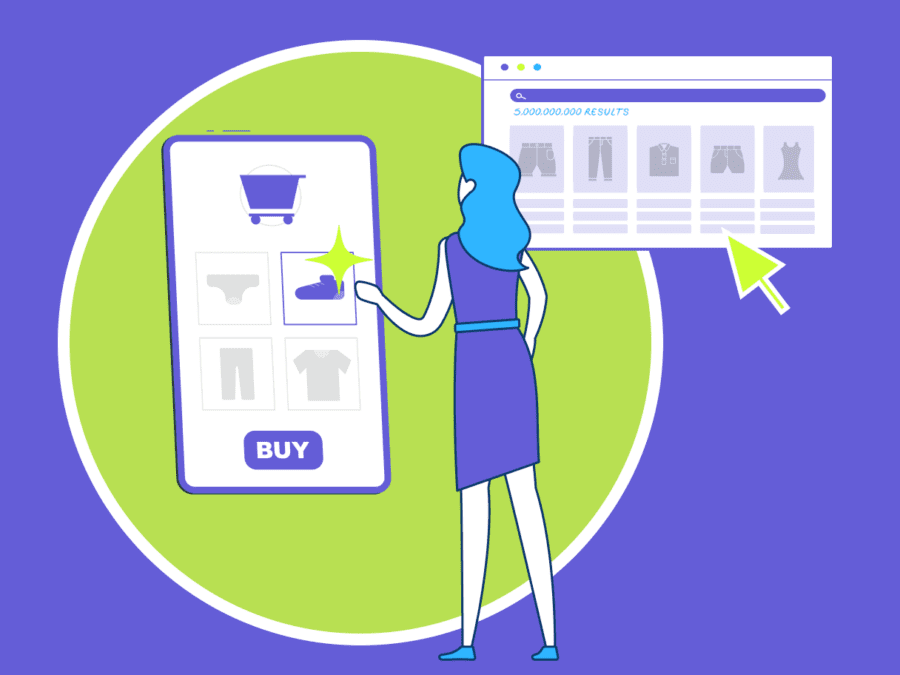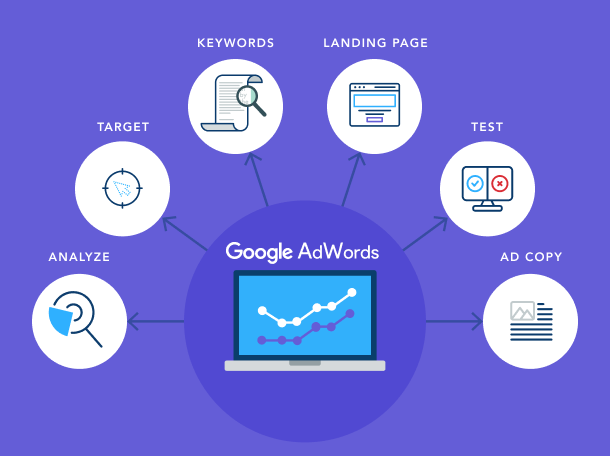Whether you’re a luxury or high-street consumer brand, a supermarket, or an online retailer, the challenges you face in search are highly comparable. From managing a network of resellers to protect your brand; understanding the impact of market shifts and seasonal fluctuations; to getting insights on competitive ad copy.
We’ve highlighted four of the top challenges retailers face and identified effective tactics to solve them and optimize your Google Ads strategy:
1. Correlate Product Listing Ads (PLA) images and price points with performance
Retailers often struggle to identify differences in competitor Google Shopping imagery and the impact of product display variations on performance. Despite having price tracking tools in place to monitor competitors’ pricing, it can still be a challenge to correlate the impact of price points with performance on the SERP.
This overall lack of visibility makes it difficult to identify where and how to optimize product presentation, and to understand the relationship between pricing strategies and product visibility or competitiveness.
Within Adthena’s Shopping Ads get insights on how your competitors are positioning their products in terms of:
- Market coverage, display period, frequency
- Pricing and descriptions
- Product themes
- The number of search terms the PLA appears on
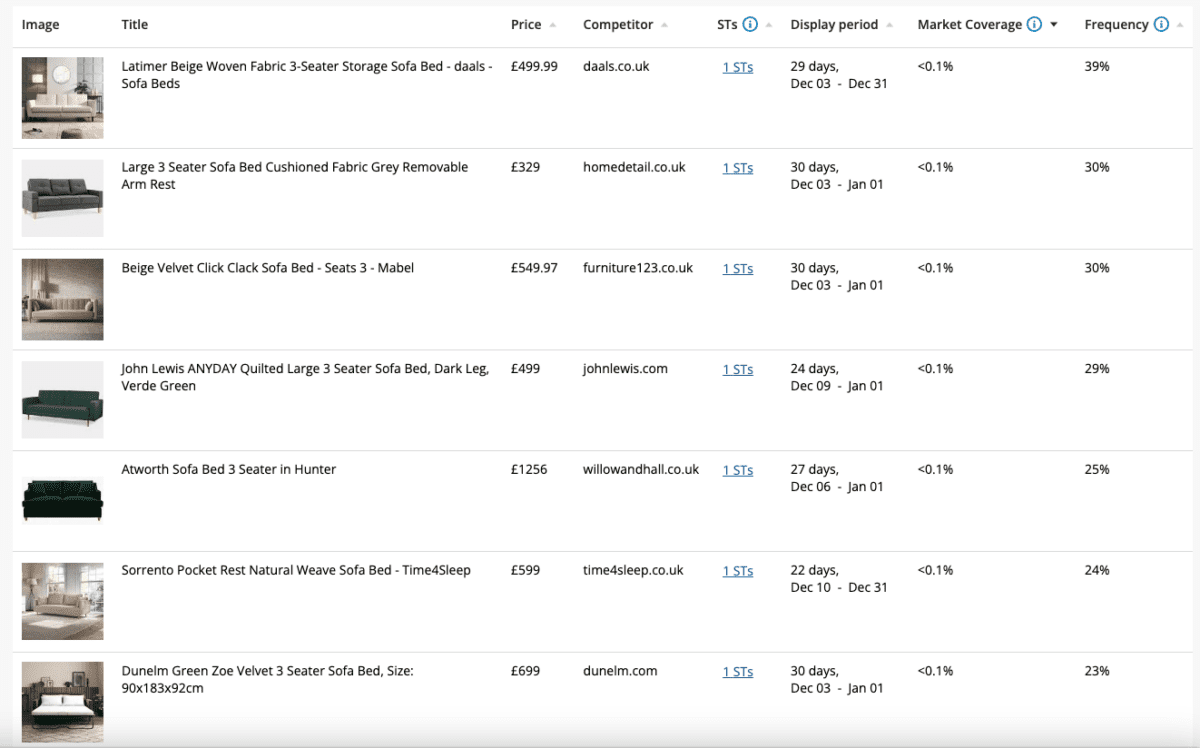
We see above in Adthena’s Shopping Ads that the daals.co.uk PLA is appearing top for search term “Sofa bed 3 seat”.
By analyzing successful visual elements used by competitors, and successful asset practices observed in the market, you can create new images that resonate better with your target audience. Discussions with trading teams will also be better informed when making pricing adjustments, ensuring competitive and effective pricing, and market positioning.
2. Stay on top of competitor movements
Staying on top of competitor movements and competitor count across the various categories, locations, and search terms remains a constant frustration for retailers. Not only that, they lack visibility on how each category is contributing to performance and competitor performance.
Adthena’s My Analytics, eliminates the need for external tools like Tableau by centralizing key insights such as:
- Competitor movements: compare week-on-week performance, identify the biggest movers, and gain an overview of different categories compared with your other top competitors.
- Market movements: get a high-level overview of weekly trends for selected periods and most-moved competitors.
- Competitor count: breakdown selected periods by day, week, or month to illustrate changes in competitors to help identify patterns.
- Paid and organic: reveal the best and worst performing search terms within the selected search term group
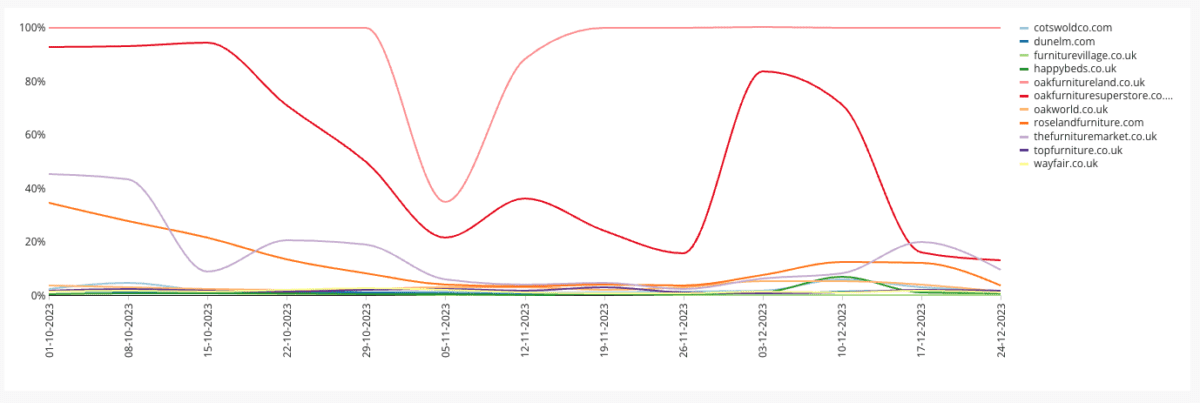
Within Adthena’s Share of Impressions report, you can see the Share of Impressions for the top 10 domains over the selected date range. We can see here that Oakfurnitureland.co.uk consistently maintained the highest Share of Impressions, with a steep dip in November. With this insight, the brand could have quickly identified changes in competitor strategy and adjusted its own strategy.
3. Take control of your Performance Max Campaigns
Despite its versatility, Performance Max (PMax) limits control over whether campaigns appear on brand terms. You generally don’t have visibility over search term click-through-rate (CTR) on the SERP and Google doesn’t provide a Search Query Report. This limited control and visibility forces you to trust Google to optimize campaigns effectively.
Within Adthena Top Ads, you gain detailed insight into:
- What offers, prices, and calls-to-action your competitors are using
- How each offer or message affects the average position
- How many ads each competitor is running concurrently and how often they refresh ad copy
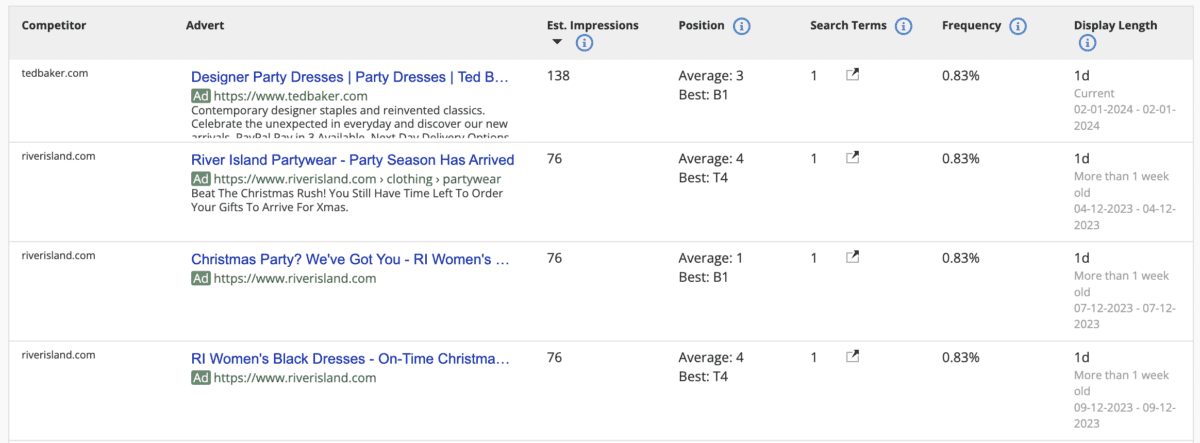
In this example from Adthena’s Top Ads, we see that tedbaker.com was the highest competitor for the search term “dress black party”, achieving 138 ad impressions.
4. Catch and submit brand infringements to Google
You may have achieved the top of the search rankings but if your trademarks and brand equity aren’t protected, you could lose valuable clicks to rivals.
Resellers may be competing too aggressively on your brand terms or affiliates might be using incorrect ad copy and be bidding on restricted terms. Or perhaps competitors are illegally using your trademarks in their ad copy.
Tracking the number of infringements across your brand is one important element of brand protection. Adthena’s Infringement Tracker will track all of your brand infringements by the hour and instantly submit trademark infringement evidence to Google.
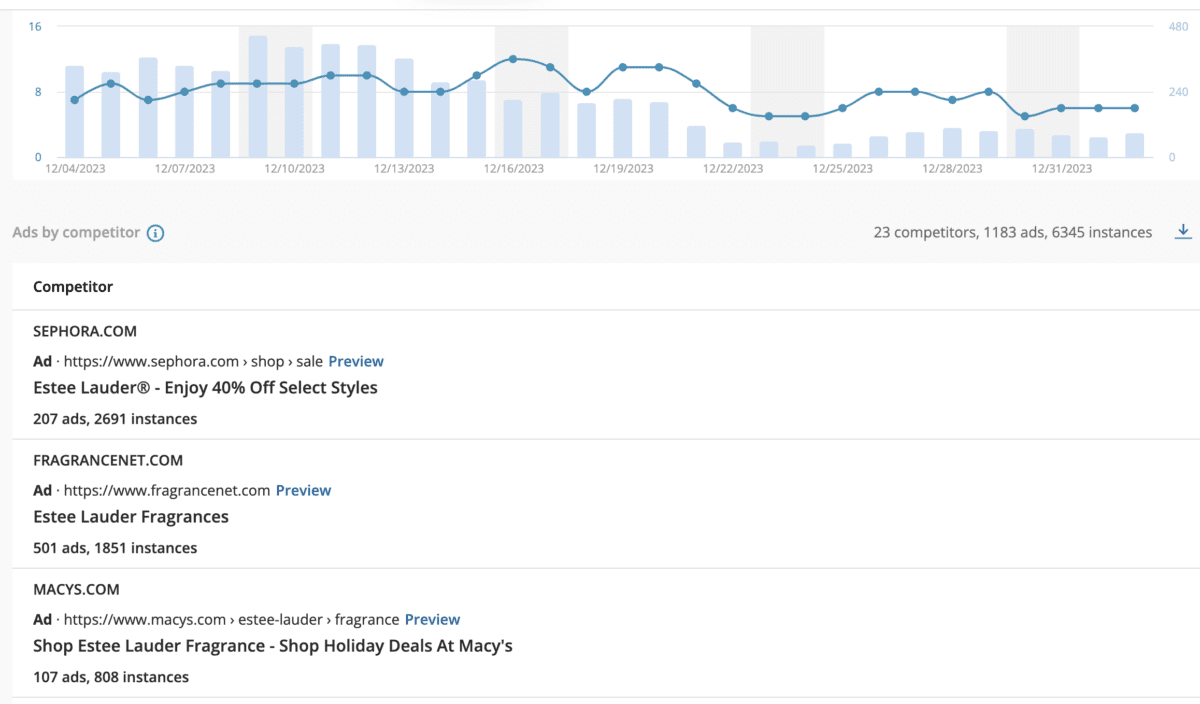
In this report, Adthena’s Infringement Tracker has identified 6,345 infringement instances on Estèe Lauder across 23 competitors. Sephora.com, fragrancenet.com and macys.com are the three main brands, competing on these brand terms.
Master the retail terrain with Adthena
The retail landscape, whether in luxury, high-street, or online markets, presents significant challenges across various domains. From managing reseller networks to understanding market shifts, pricing impacts, and competitor insights, retailers encounter significant hurdles. However, addressing these challenges strategically can lead to bagging new customers and securing a competitive edge within your Google Ad campaigns.
The key challenges highlighted—correlating PLA images and price points with performance, staying abreast of competitor movements, taking control of Performance Max Campaigns, and safeguarding brand equity—are pivotal in navigating the retail Google Ads landscape effectively.
With Adthena in your toolkit, retailers can proactively tackle these complexities, optimize strategies, and secure their brand’s competitive position amidst dynamic market shifts and fierce competition.
To discover more on how to achieve search success in retail markets, download our ENTERPRISE SEARCH GUIDE: Bag new customers in competitive retail markets

